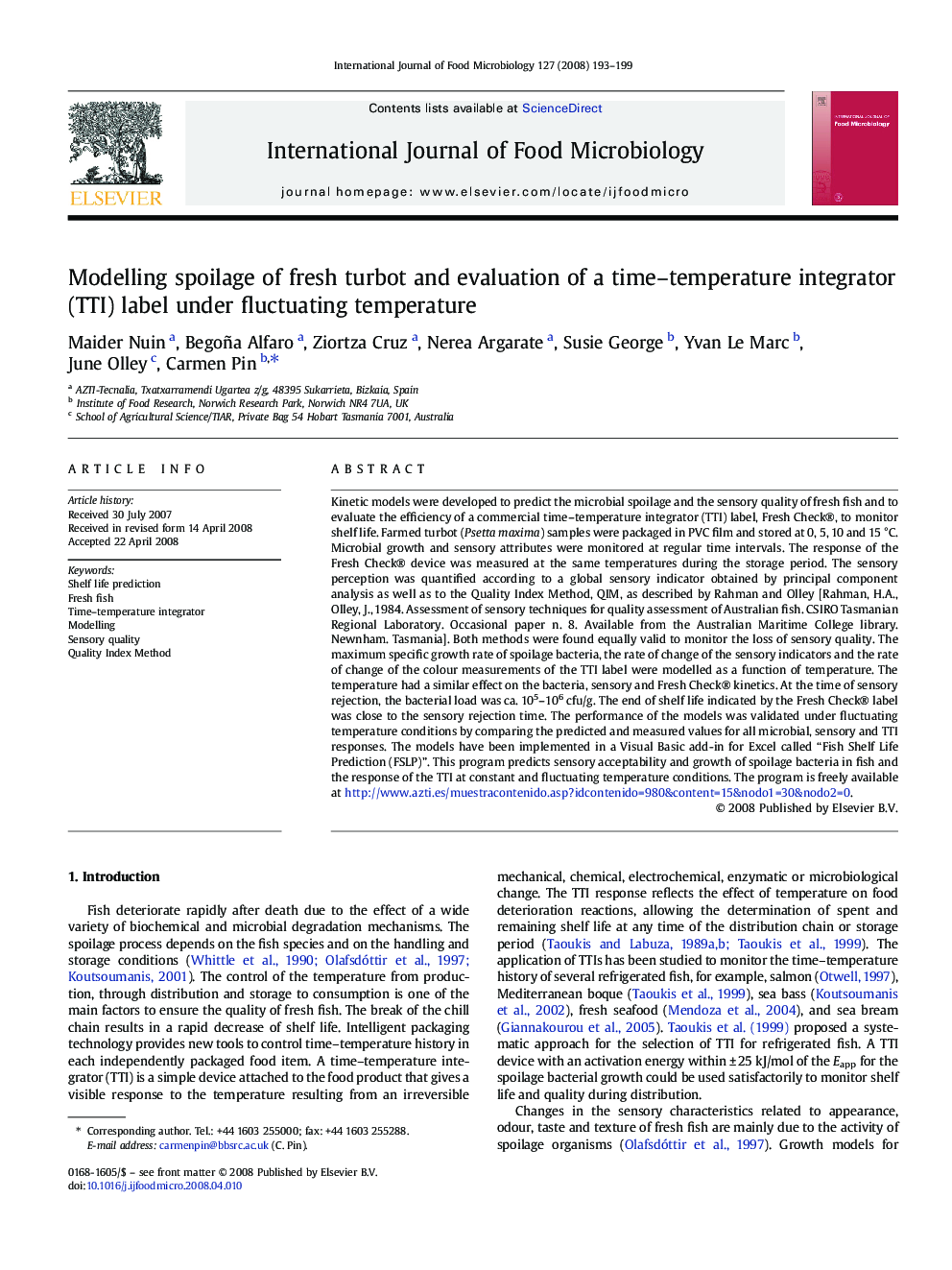| Article ID | Journal | Published Year | Pages | File Type |
|---|---|---|---|---|
| 4369762 | International Journal of Food Microbiology | 2008 | 7 Pages |
Kinetic models were developed to predict the microbial spoilage and the sensory quality of fresh fish and to evaluate the efficiency of a commercial time–temperature integrator (TTI) label, Fresh Check®, to monitor shelf life. Farmed turbot (Psetta maxima) samples were packaged in PVC film and stored at 0, 5, 10 and 15 °C. Microbial growth and sensory attributes were monitored at regular time intervals. The response of the Fresh Check® device was measured at the same temperatures during the storage period. The sensory perception was quantified according to a global sensory indicator obtained by principal component analysis as well as to the Quality Index Method, QIM, as described by Rahman and Olley [Rahman, H.A., Olley, J., 1984. Assessment of sensory techniques for quality assessment of Australian fish. CSIRO Tasmanian Regional Laboratory. Occasional paper n. 8. Available from the Australian Maritime College library. Newnham. Tasmania]. Both methods were found equally valid to monitor the loss of sensory quality. The maximum specific growth rate of spoilage bacteria, the rate of change of the sensory indicators and the rate of change of the colour measurements of the TTI label were modelled as a function of temperature. The temperature had a similar effect on the bacteria, sensory and Fresh Check® kinetics. At the time of sensory rejection, the bacterial load was ca. 105–106 cfu/g. The end of shelf life indicated by the Fresh Check® label was close to the sensory rejection time. The performance of the models was validated under fluctuating temperature conditions by comparing the predicted and measured values for all microbial, sensory and TTI responses. The models have been implemented in a Visual Basic add-in for Excel called “Fish Shelf Life Prediction (FSLP)”. This program predicts sensory acceptability and growth of spoilage bacteria in fish and the response of the TTI at constant and fluctuating temperature conditions. The program is freely available at http://www.azti.es/muestracontenido.asp?idcontenido=980&content=15&nodo1=30&nodo2=0.
